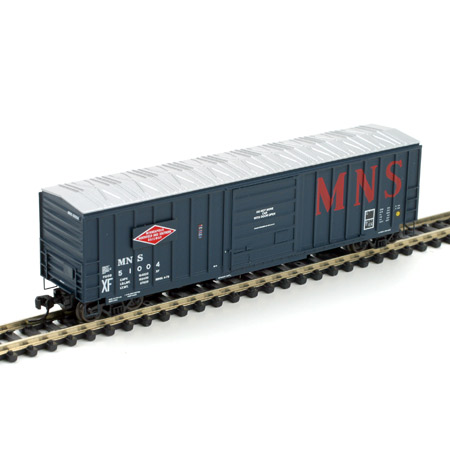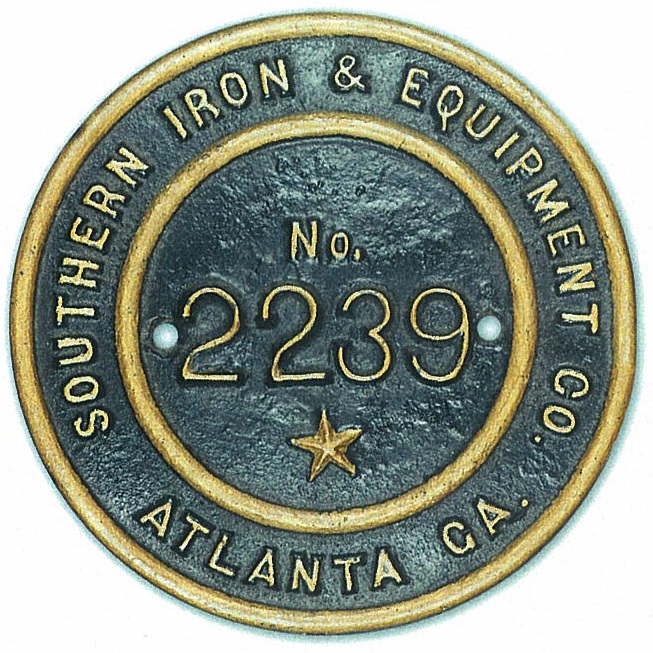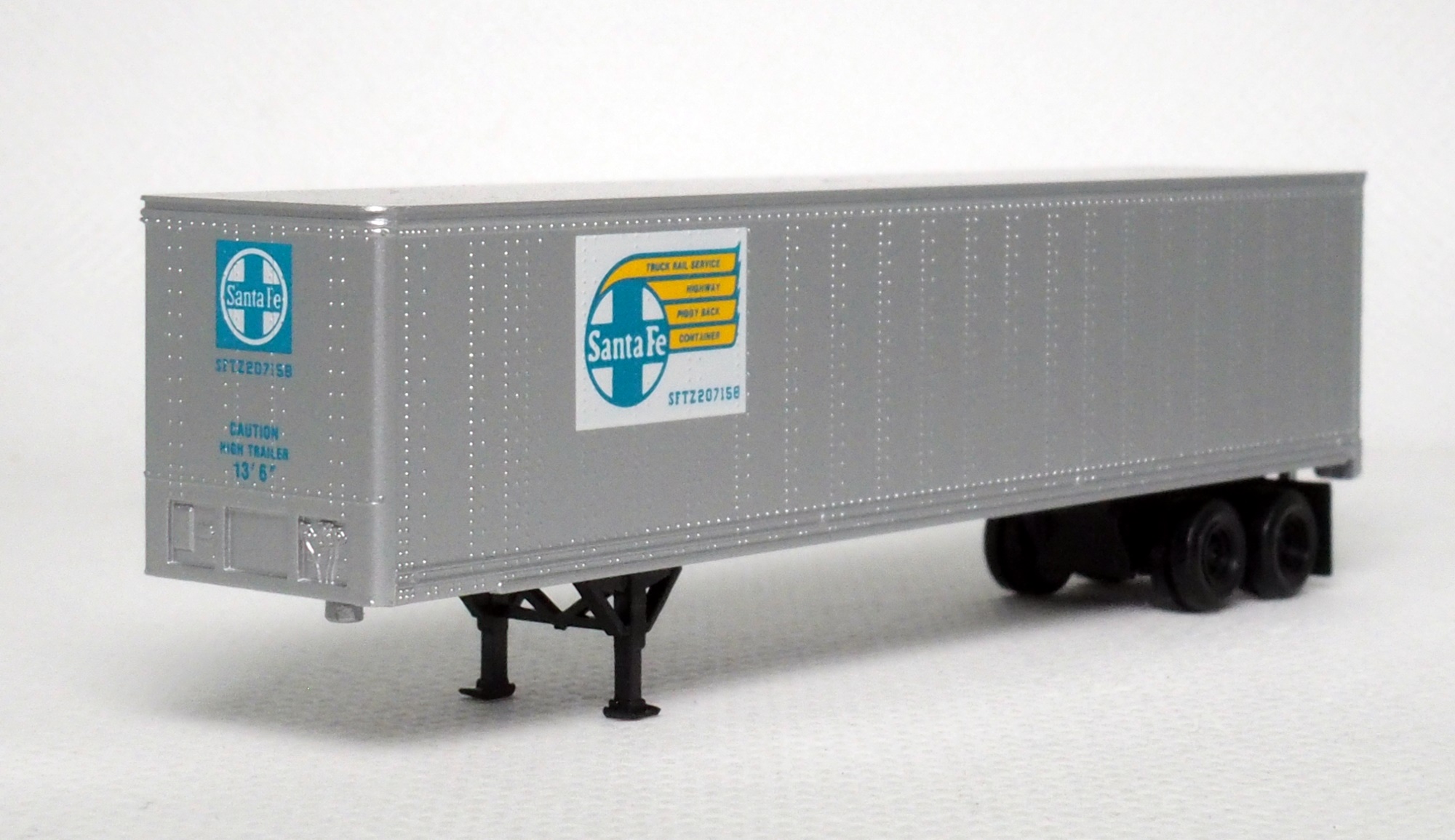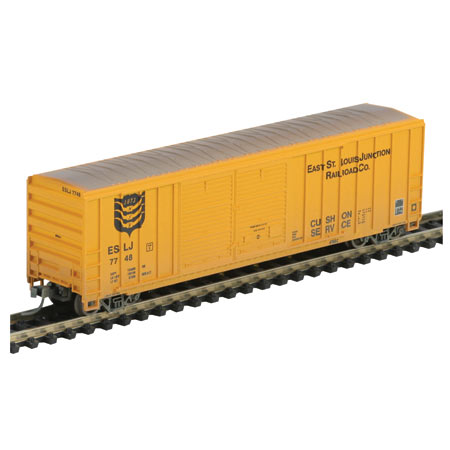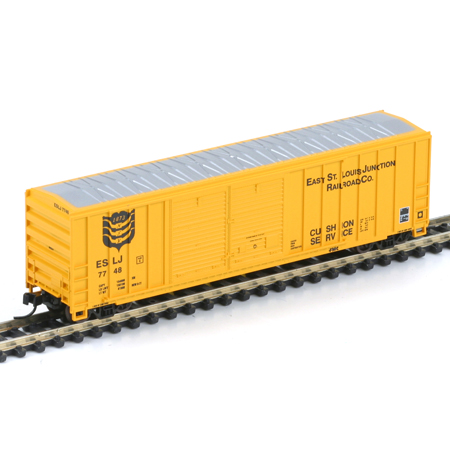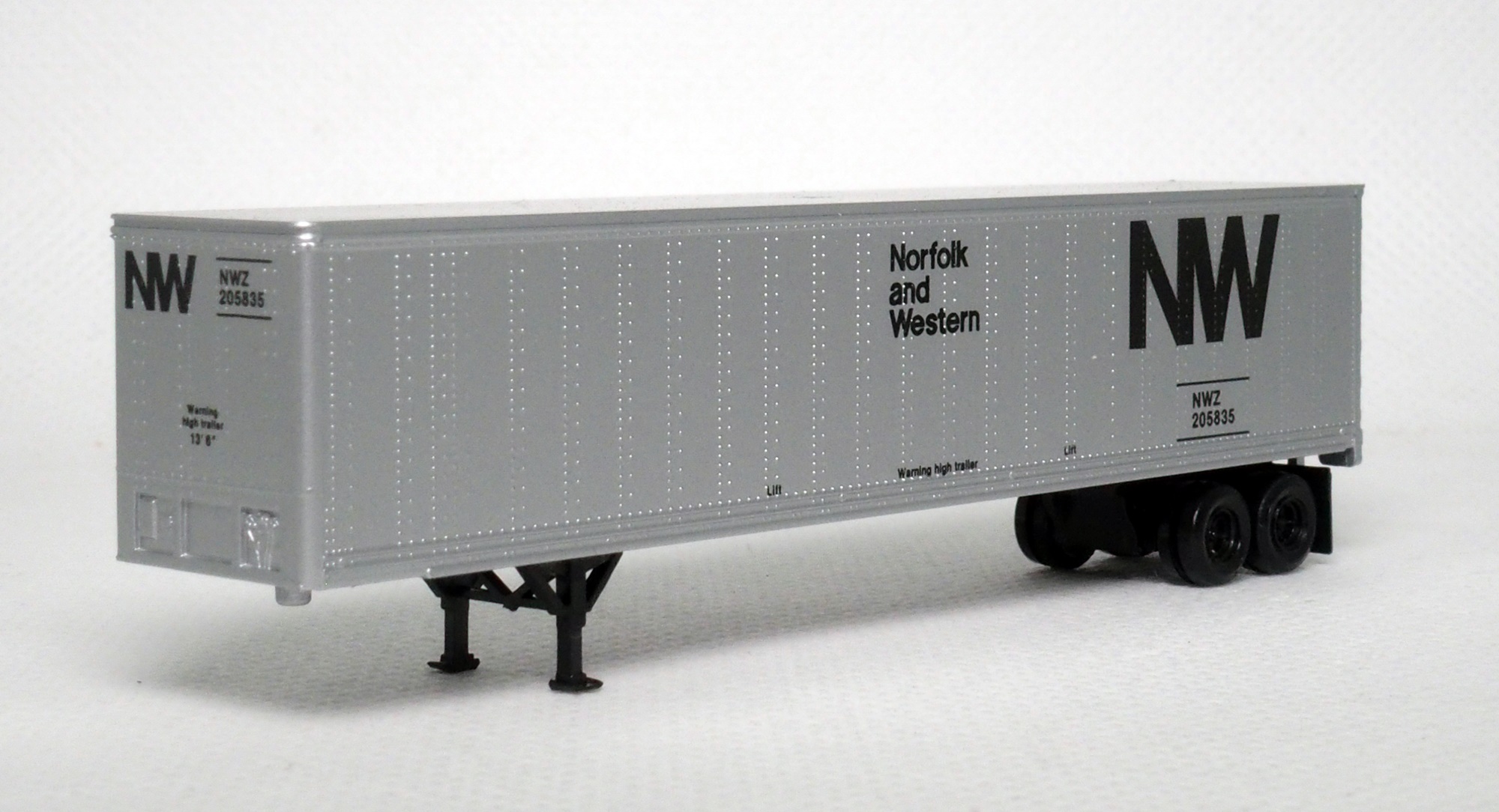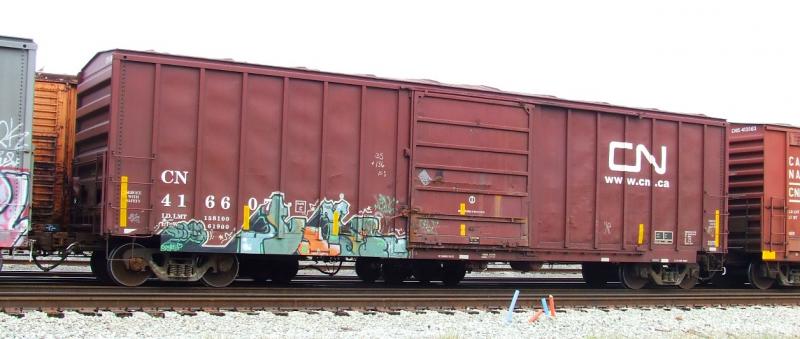Model Information: MODEL FEATURES:
Fully detailed molded under frames,
Screw mounted trucks for enhanced performance,
Accumate magnetically operated knuckle couplers,
Weighted for optimum operation,
Photo etched stirrup steps provide scale cross section,
Scale profile brake wheels.
Prototype History: The 1970s saw a shift in general purpose boxcars from 40 foot to 50 foot exterior post designs. The incentive per diem regulations (IPD) made it very attractive for railroads to acquire large fleets of boxcars. Along with the larger companies like Pullman Standard and American Car & Foundry (ACF), Southern Iron & Equipment Co. (SIECO) also jumped into the 50 foot boxcar business. The SIECO railcars were recognizable by the "gap" between the roof and walls of the car.
Road Name History:  MN&S launched in 1918 to take over the former Dan Patch Lines that had fallen into bankruptcy two years before. MN&S inherited the Dan Patch nickname (named after a race horse.) The line was 87 miles long, running from Minneapolis south to Northfield, Minnesota. The new owners promoted the line as a bypass around the Twin City’s terminals. MN&S connected with the original Soo Line at Crystal, Minneapolis & St. Louis, and Great Northern at Glenwood, the Omaha Road at Savage, and Chicago Great Western, Milwaukee Road, and Rock Island at Northfield. Passenger service was provided with gas-electric cars into the 1940s. In addition to transferring blocks of cars between the Twin City’s various Class One railroads, the MN&S also had a significant number of on line customers.
MN&S launched in 1918 to take over the former Dan Patch Lines that had fallen into bankruptcy two years before. MN&S inherited the Dan Patch nickname (named after a race horse.) The line was 87 miles long, running from Minneapolis south to Northfield, Minnesota. The new owners promoted the line as a bypass around the Twin City’s terminals. MN&S connected with the original Soo Line at Crystal, Minneapolis & St. Louis, and Great Northern at Glenwood, the Omaha Road at Savage, and Chicago Great Western, Milwaukee Road, and Rock Island at Northfield. Passenger service was provided with gas-electric cars into the 1940s. In addition to transferring blocks of cars between the Twin City’s various Class One railroads, the MN&S also had a significant number of on line customers.
The early diesel years brought Fairbanks Morse and Baldwin engines to the property. These included one each of H12-44, H10-44, VO1000 and a pair of VO660 switcher. To handle MN&S’s heavy transfer trains, they used Baldwin’s massive 6 axel center cab units, a single RT-624 and five DT6-6-2000’s. They also had a single Baldwin road switcher, a DRS6-6-1500. As the Baldwins wore out, they were replaced with six SW1200’s, two SW1500’s and a pair of SD39’s.
In 1982, Soo Line bought the MN&S. They were planning on acquiring the Milwaukee Road (which was in bankruptcy at the time) and needed the MN&S to connect their own line at Crystal with the MILW at Northfield. MN&S was operated separately until 1986 when it was merged into Soo Line.

The early diesel years brought Fairbanks Morse and Baldwin engines to the property. These included one each of H12-44, H10-44, VO1000 and a pair of VO660 switcher. To handle MN&S’s heavy transfer trains, they used Baldwin’s massive 6 axel center cab units, a single RT-624 and five DT6-6-2000’s. They also had a single Baldwin road switcher, a DRS6-6-1500. As the Baldwins wore out, they were replaced with six SW1200’s, two SW1500’s and a pair of SD39’s.
In 1982, Soo Line bought the MN&S. They were planning on acquiring the Milwaukee Road (which was in bankruptcy at the time) and needed the MN&S to connect their own line at Crystal with the MILW at Northfield. MN&S was operated separately until 1986 when it was merged into Soo Line.
Brand/Importer Information: Athearn's history began in 1938, when its founder-to-be, Irvin Athearn, started an elaborate O scale layout in his mother's house. After placing an ad selling the layout, and receiving much response to it, Irv decided that selling model railroads would be a good living. He sold train products out of his mother's house through most of the 1940s. After becoming a full-time retailer in 1946, Irv opened a separate facility in Hawthorne, California in 1948, and that same year he branched into HO scale models for the first time.
Athearn acquired the Globe Models product line and improved upon it, introducing a comprehensive array of locomotive, passenger and freight car models. Improvements included all-wheel drive and electrical contact. One innovation was the "Hi-Fi" drive mechanism, employing small rubber bands to transfer motion from the motor spindle to the axles. Another was the double-ended ring magnet motor, which permitted easy connection to all-wheel-drive assemblies. Athearn was also able to incorporate flywheels into double-ended drives.
The company produced a model of the Boston & Maine P4 class Pacific steam locomotive which incorporated a cast zinc alloy base and thermoplastic resin superstructure. It had a worm drive and all power pickup was through the bipolar trucks that carried the tender. This item was discontinued after the Wilson motor was no longer available, and was not redesigned for a more technologically advanced motor.
Athearn's car fleet included shorter-than-scale interpretations of passenger cars of Southern Pacific and Atchison, Topeka & Santa Fe Railroad prototypes. The company also offered a variety of scale-length freight cars with sprung and equalized trucks. The cars could be obtained in simple kit form, or ready-to-run in windowed display boxes. The comprehensive scope of the product line contributed to the popularity of HO as a model railroad scale, due to the ready availability of items and their low cost.
Irv Athearn died in 1991. New owners took control in 1994, but continued to follow Athearn's commitment to high-quality products at reasonable prices. Athearn was bought in 2004 by Horizon Hobby. Athearn was then moved from its facility in Compton to a new facility in Carson, California. In mid-2009, all remaining US production was moved to China and warehousing moved to parent Horizon Hobby. Sales and product development was relocated to a smaller facility in Long Beach, California.
Read more on Wikipedia and Athearn website.
Athearn acquired the Globe Models product line and improved upon it, introducing a comprehensive array of locomotive, passenger and freight car models. Improvements included all-wheel drive and electrical contact. One innovation was the "Hi-Fi" drive mechanism, employing small rubber bands to transfer motion from the motor spindle to the axles. Another was the double-ended ring magnet motor, which permitted easy connection to all-wheel-drive assemblies. Athearn was also able to incorporate flywheels into double-ended drives.
The company produced a model of the Boston & Maine P4 class Pacific steam locomotive which incorporated a cast zinc alloy base and thermoplastic resin superstructure. It had a worm drive and all power pickup was through the bipolar trucks that carried the tender. This item was discontinued after the Wilson motor was no longer available, and was not redesigned for a more technologically advanced motor.
Athearn's car fleet included shorter-than-scale interpretations of passenger cars of Southern Pacific and Atchison, Topeka & Santa Fe Railroad prototypes. The company also offered a variety of scale-length freight cars with sprung and equalized trucks. The cars could be obtained in simple kit form, or ready-to-run in windowed display boxes. The comprehensive scope of the product line contributed to the popularity of HO as a model railroad scale, due to the ready availability of items and their low cost.
Irv Athearn died in 1991. New owners took control in 1994, but continued to follow Athearn's commitment to high-quality products at reasonable prices. Athearn was bought in 2004 by Horizon Hobby. Athearn was then moved from its facility in Compton to a new facility in Carson, California. In mid-2009, all remaining US production was moved to China and warehousing moved to parent Horizon Hobby. Sales and product development was relocated to a smaller facility in Long Beach, California.
Read more on Wikipedia and Athearn website.
Item created by: Lethe on 2016-08-31 14:05:26. Last edited by gdm on 2018-06-27 17:54:15
If you see errors or missing data in this entry, please feel free to log in and edit it. Anyone with a Gmail account can log in instantly.
If you see errors or missing data in this entry, please feel free to log in and edit it. Anyone with a Gmail account can log in instantly.


